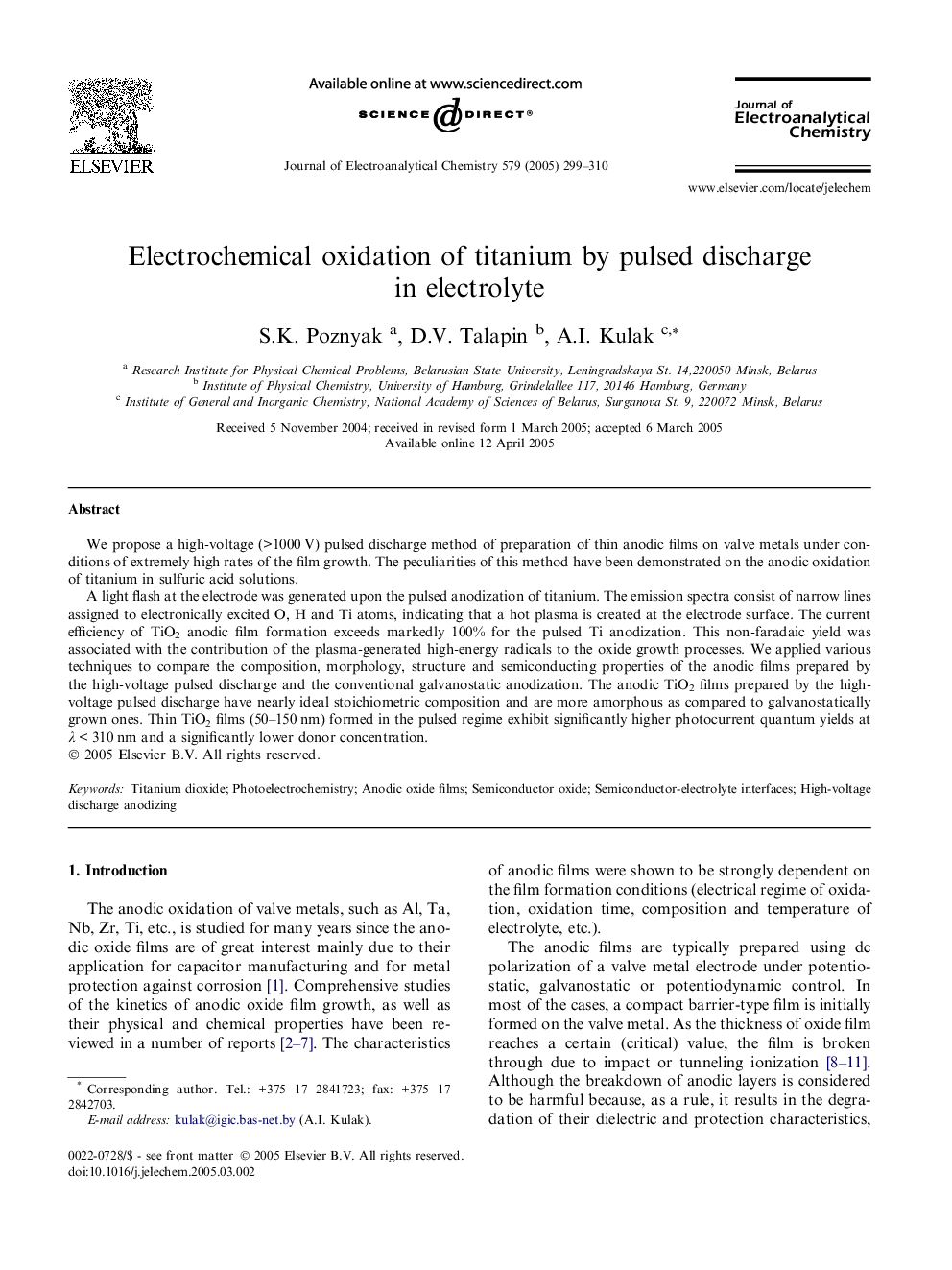| Article ID | Journal | Published Year | Pages | File Type |
|---|---|---|---|---|
| 10276049 | Journal of Electroanalytical Chemistry | 2005 | 12 Pages |
Abstract
A light flash at the electrode was generated upon the pulsed anodization of titanium. The emission spectra consist of narrow lines assigned to electronically excited O, H and Ti atoms, indicating that a hot plasma is created at the electrode surface. The current efficiency of TiO2 anodic film formation exceeds markedly 100% for the pulsed Ti anodization. This non-faradaic yield was associated with the contribution of the plasma-generated high-energy radicals to the oxide growth processes. We applied various techniques to compare the composition, morphology, structure and semiconducting properties of the anodic films prepared by the high-voltage pulsed discharge and the conventional galvanostatic anodization. The anodic TiO2 films prepared by the high-voltage pulsed discharge have nearly ideal stoichiometric composition and are more amorphous as compared to galvanostatically grown ones. Thin TiO2 films (50-150 nm) formed in the pulsed regime exhibit significantly higher photocurrent quantum yields at λ < 310 nm and a significantly lower donor concentration.
Keywords
Related Topics
Physical Sciences and Engineering
Chemical Engineering
Chemical Engineering (General)
Authors
S.K. Poznyak, D.V. Talapin, A.I. Kulak,
